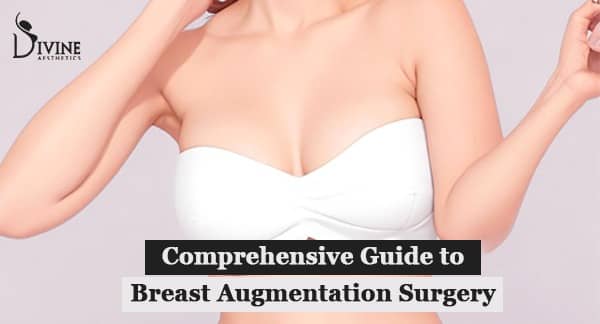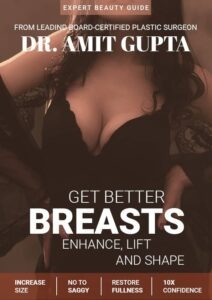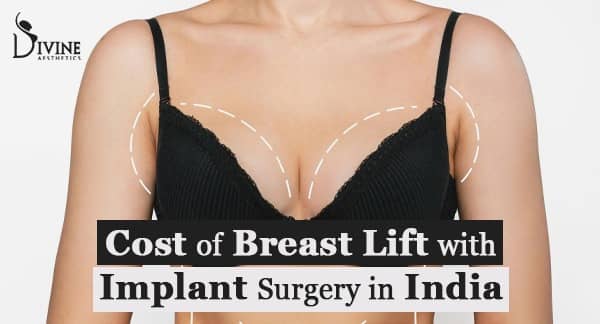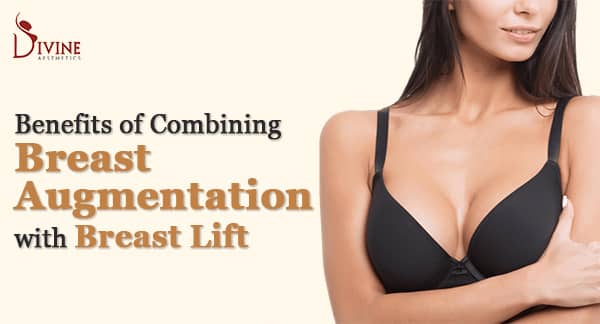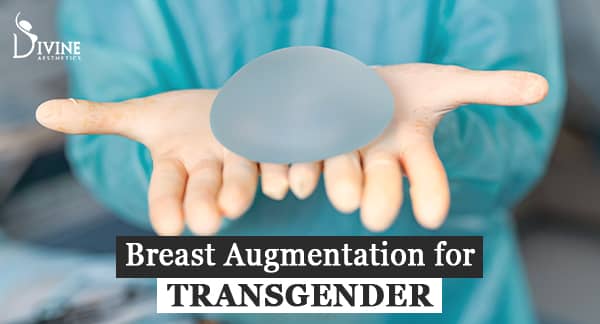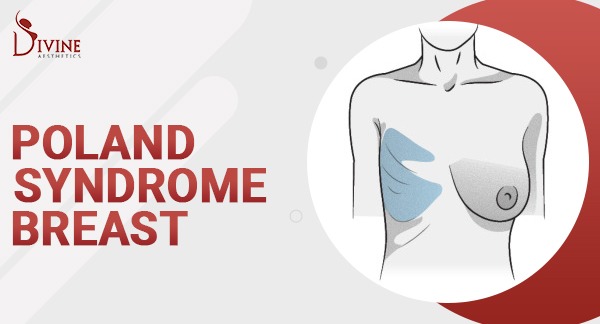Guide to Breast Augmentation
Going under the proverbial scalpel is always a big decision, whether surgery is big or small. If you are considering a breast implant surgery for yourself or someone you care for, having a 360-degree view helps you make an informed choice. This comprehensive breast augmentation guide will certainly help you to understand all about breast augmentation surgery procedures in India and different types of breast implants.
Different people have varied reasons for choosing breast augmentation surgery. You may want to boost your confidence. You may seek a well-proportioned body. Maybe you have just had a mastectomy and you want to undo the physical damage it has wrought upon you. Whatever is the reason you want to feel good under your skin.
However, navigating through the decision requires more than just a desire for change. You should be well informed. You should have enough information to help weigh the pros and cons thoroughly. You should be able to make an educated decision that is right for you, ensuring your safety and happiness with the outcome.
What is breast augmentation or breast implant surgery?
Breast augmentation surgery is a procedure that enhances the size and shape of a person’s breasts. Unlike other cosmetic surgeries that might focus on removing or altering existing features, breast augmentation is about adding to what is already there.
It involves placing breast implants under breast tissue or chest muscles.
But why do people consider this surgery in the first place? The reasons are as varied as the individuals themselves, yet here are six common motivations:
- Boosting Self-confidence: You want to feel more confident under your skin. Changing your appearance can significantly impact how you view yourself and interact with the world.
- Balancing Body Proportions: Some people want their body to have a more balanced look. By enhancing breast size, you can achieve a proportion that feels right to you.
- Restoring After Pregnancy: Pregnancy and breastfeeding can change a woman’s breasts, often leading to a loss in volume or shape. Breast implant surgery can help restore the pre-pregnancy appearance.
- Reconstruction After Mastectomy: For those who have undergone mastectomies due to cancer or other conditions, this surgery offers a way to rebuild the breast area, contributing to their physical and emotional recovery.
- Correcting Asymmetry: Natural asymmetry is common, but for some, the difference in breast size or shape can be quite noticeable. A breast surgeon can correct this imbalance, making both breasts more symmetrical.
- Undoing Aging Changes: As part of the aging process, breasts can lose volume and elasticity. Augmentation can help in regaining a youthful appearance.
Your peculiar motivation for going for a breast implant surgery may not be listed above, but knowing the reason is crucial. It is not just about aesthetics; it is about how you feel inside. Each reason underscores the importance of considering the surgery from all angles, ensuring that the decision to proceed is well-informed.
What are different breast implants?
One of the most common or preferred approaches of breast implant is intramammary approach, often referred to as the inframammary fold (IMF) incision technique. It offers a discrete ska location and precise control over implant placement. Understanding the intricacies of this approach can help individuals considering breast augmentation to make informed decisions about their breast implant surgery options.
As mentioned above, at the heart of the intramammary approach is the incision location. Surgeons strategically place this incision in the natural crease under the breast, known as the inframammary fold. This choice is deliberate, aiming to minimize the visibility of any post-surgical scarring. Once the incision is made, the surgeon proceeds to create a pocket within the breast tissue or beneath the pectoral muscle. The placement of this pocket is critical, as it determines the final position and appearance of the breast implant.
The process of inserting the implant through the incision requires meticulous precision. Surgeons must ensure that the implant is correctly aligned and positioned within the prepared pocket. Achieving the desired aesthetic outcome depends on this precision. Following the successful placement of the implant, the incision is then sutured and carefully bandaged to enable healing.
Advantages of the inframammary approach
The inframammary approach has several advantages that make it popular among both surgeons and patients. Other advantages include:
- Scar Concealment: The inframammary approach breast implant lets the surgery scar hide in the natural crease under the breast, so it’s not as easy to see when you’re standing up or sitting down.
- Direct Visual Access: Surgeons can see everything clearly during the operation, which helps them make the space for the implant more accurately and put it in just the right spot.
- Flexibility with Implant Types: This method works with many kinds of implants, giving you lots of options to get the look you want or to meet specific needs.
- Minimal Aesthetic Impact: The strategic placement of the incision minimizes the impact of scarring on the overall aesthetic outcome.
- Improved Placement Accuracy: Being able to see the surgery area clearly helps place the implant more accurately, making the final result look better.
- Suitable for Various Patient Anatomies: This technique can be tweaked to fit different body shapes and sizes, making it a flexible choice.
- Minimal Impact on Breastfeeding: Since the cut is made away from the nipple, it might not affect breastfeeding as much as other surgery methods could.
- Enhanced Surgical Control: Surgeons have better control over the surgical process, from incision to implant placement, due to the clear access to the breast tissue and muscle.
- Potential for Less Tissue Disturbance: The approach may allow for less disturbance to breast tissue and the surrounding areas, potentially leading to a smoother recovery.
- Compatibility with Revision Surgeries: The inframammary approach works well for touch-up surgeries later on if you need changes or new implants, using the same cut site.
Another, less recommended approach is the areolar approach. Areola is the dark area surrounding the nipple.
In the surgery, the doctor cuts a half-circle or circle shape around the bottom part of the dark area around your nipple. Through this cut, they make a space either under the breast or under the muscle on your chest to put in the implant. You’ll be asleep during the surgery because of the anesthesia. What the implant is made of (like silicone or saline) and where they put it (either under your breast or deeper under your muscle) will depend on your body shape, what you want, and what the doctor thinks is best.
One of the key benefits of the areolar approach is the potential for less visible scarring. The incision blends with the areola’s natural color contrast, making the scar less noticeable than in other areas. This approach also allows the surgeon direct access to the breast tissue, facilitating precise placement of the implant. It can be particularly advantageous for patients undergoing simultaneous breast lift and augmentation.
Surgeons like Dr. Amit Gupta normally don’t recommend the areolar approach for breast augmentation because considering the Indian climate, it may lead to infection. There may also be reduced nipple sensation due to nerve damage during surgery.
Different types of breast implants
When considering breast augmentation, knowing the types of breast implants available is key. Each type offers different benefits and feels, catering to various preferences and goals. Below we are listing some breast implant types but do keep in mind that not all options may be available with the breast implant surgeon that you have chosen for yourself.
Saline Implants
Saline breast implants are filled with sterile salt water. They’re inserted empty into the breast and then filled to the desired size, allowing for a smaller incision and adjustable volume. This type of implant is recommended for its safety; if it leaks, the saline is harmlessly absorbed by the body.
However, they can feel less natural than silicone implants and may show rippling under the skin, particularly in women with less natural breast tissue.
Saline implants offer a versatile option with a straightforward surgery and recovery process. Yet, their feel and appearance might not suit everyone’s preferences, making personal consultation crucial.
Silicone Implants
Silicone breast implants are popular for breast augmentation surgery because they’re filled with a silicone gel that feels more like natural breast tissue. Unlike saline implants, silicone ones are pre-filled and require a slightly larger incision for insertion. Many women choose silicone for their natural feel and appearance.
However, if a silicone implant leaks, the gel may stay inside the implant shell or escape into the breast implant pocket, necessitating regular check-ups with MRI or ultrasound to ensure their integrity.
While they offer a more natural look and feel, the potential for silent leaks and the need for larger incisions are notable disadvantages.
Round Implants
Round breast implants are a common choice before breast augmentation, offering a uniformly full appearance across the entire breast. Preferred for their ability to provide a noticeable lift and volume, these implants contribute to a more pronounced cleavage.
A breast surgeon may recommend round implants to achieve a fuller look, especially in the upper part of the breasts. While they offer a significant enhancement, the round shape may not mimic the slope of natural breasts as closely as teardrop-shaped implants.
The decision to choose round implants should be discussed with a breast surgeon, considering the desired aesthetic outcome and the implants’ potential to rotate without affecting the natural breast shape.
Gummy Bear Implants
Gummy bear implants, known for their stability and natural feel, are a popular choice for breast implant surgery. Made of a cohesive silicone gel that retains shape even when cut, these implants mimic natural breast tissue closely. The firmer texture and teardrop shape offer a natural-looking slope, making them appealing to women seeking a subtle enhancement.
However, gummy bear implants require a larger incision due to their form-stable nature. One significant advantage is their lower risk of leakage and rippling.
Despite these benefits, their firmness might not suit everyone’s preference, and their specific shape means any rotation can lead to an unnatural appearance, requiring potential correction. Women prefer gummy bear implants for their durability and natural contour.
Structured Saline Implants
Structured saline implants represent an innovative approach within the types of breast augmentation, offering a compromise between the natural feel of silicone and the safety of saline. These implants have an inner structure designed to make the saline filler feel more natural.
The procedure for inserting structured saline implants is similar to traditional saline implants, allowing for a smaller incision and adjustable size.
Advantages include a lower risk of leakage compared to silicone and a more natural feel than traditional saline implants. However, they may still exhibit some rippling.
Patients might choose structured saline implants for their combination of safety, aesthetic appeal, and the reassurance of saline, making them a versatile choice in breast augmentation options.
Smooth Implants
Smooth breast implants are a popular choice for breast implant surgery due to their soft and natural feel. These implants have a smooth outer shell that allows them to move freely within the breast pocket, mimicking the movement of natural breast tissue.
The procedure for placing smooth implants is similar to other types, but their flexibility can offer a more natural shape and less risk of visible rippling. However, because they move freely, there’s a potential for more noticeable changes with body movement.
Patients often choose smooth implants for their softer feel and the dynamic results they can provide, despite the possibility of slightly increased movement compared to textured implants.
Textured Implants
Textured breast implants are designed with a rough surface that adheres to the breast tissue, preventing movement and reducing the risk of scar tissue forming in a way that might distort the shape of the breast, a condition known as capsular contracture.
Used in both breast implant surgery and breast augmentation surgery, these implants can offer a more stable position over time.
However, the textured surface has been associated with a slightly higher risk of a rare type of immune system cancer known as BIA-ALCL.
Despite this, some patients and surgeons prefer textured implants for their ability to stay in place, particularly beneficial for shaped implants that could cause an unnatural appearance if rotated.
Fat Transfer
The fat transfer method for breast augmentation, often highlighted in a breast augmentation guide, involves harvesting fat from one’s own body through liposuction and then injecting it into the breasts. This breast implant operation is favoured for its natural results and dual benefit of contouring areas where fat is removed.
Unlike traditional implants, this technique uses the patient’s own fat, reducing the risk of allergic reactions and offering a more natural feel and appearance.
Advantages include the absence of foreign materials in the body and minimal scarring, as well as improved body contour in areas of fat removal.
However, limitations include the possibility of fat reabsorption by the body, leading to less predictable outcomes and potentially requiring multiple procedures to achieve the desired result. Moreover, there’s a limit to how much size increase is possible, making it less suitable for those seeking a significant change in breast size.
This method is a comprehensive solution for those seeking modest enhancements and body contouring simultaneously.
Each implant type has its pros and cons, tailored to meet diverse needs and outcomes. An experienced breast surgeon like Dr. Amit Gupta can thoroughly examine your expectations and physical conditions to suggest the best option for you.
How to choose the correct breast implant for your needs?
Choosing the right breast implant for your needs involves careful consideration of both your immediate desires and long-term lifestyle.
Start by analysing what you want from breast implant surgery in terms of size, shape, and feel. Think about how each option fits with your daily life and future. For instance, your ability to maintain self-care routines and follow-up visits should influence your choice.
It is not just about the aesthetic outcome; it is also about ensuring you can commit to the necessary care and check-ups to maintain your health and the integrity of the implants over time.
Your breast augmentation doctor is your best resource in this decision-making process. He or she can offer insights into how different implants might look and feel on your body, considering your body frame, skin elasticity, and personal goals. Trust his or her expertise and guidance to find the implant that is a best fit for you now, and in the years to come.
How is the implant inserted during the breast augmentation surgery?
During breast augmentation surgery, the surgeon makes a precise incision to create a pocket for the breast implant. This incision can be made under the breast, around the nipple, or in the armpit, depending on the type of implant, needed breast shape, and your anatomy.
The implant is then carefully inserted into this pocket either behind the breast tissue or beneath the chest muscle. The placement depends on several factors including the implant type, your body structure, and the surgeon’s recommendation for achieving the most natural-looking result.
Once the implant is properly positioned, the incision is closed with sutures, completing the procedure.
Recovery precautions after your breast implant surgery
Recovery after breast implant surgery takes careful planning and patience. It’s a major procedure, and how quickly you recover depends a lot on your health before and after surgery, the implant size, and your body’s healing speed. Typically, recovery takes six to eight weeks.
Right after surgery, you might feel groggy and sore, especially if the implants were placed under the muscle. This discomfort should lessen as the muscle stretches.
In the first few hours, your breasts will be wrapped in bandages or a special bra, and you’ll get instructions on caring for the surgical site. The initial days are usually the toughest, and you’ll need to manage discomfort with medication.
Avoid lifting your arms high and use cold compresses to reduce swelling. Walking a bit each day helps prevent complications like pneumonia. Stick to showers over baths to keep wounds dry and wait at least four weeks before soaking in a tub.
By the end of the first week, pain should be manageable with over-the-counter medications.
You’ll gradually feel better, but heavy lifting and intense activities are still off-limits. Most return to work within two to three weeks, unless their job is physically demanding.
As weeks pass, you can slowly start light exercise with your surgeon’s approval. Keep wearing the surgical bra to support healing.
Eating a healthy diet rich in vitamins and fibre, along with staying hydrated, aids recovery. Avoid alcohol and caffeine as they can worsen swelling.
Preparing your home with healthy foods and having someone to help with meals can make recovery smoother. Following these steps closely ensures a better recovery and outcome.
How to choose the right breast implant surgeon for your, and what cost to expect?
Selecting the right breast surgeon for your augmentation surgery is a decision that requires attention to detail. Look for a surgeon with a wealth of experience. Those who have successfully performed many surgeries will offer the expertise needed for a positive outcome.
If possible, connect with women who have undergone surgery with your shortlisted surgeons. Their firsthand experiences can offer invaluable insights into what you can expect. Online reviews can serve as a helpful guide, shedding light on the surgeon’s reputation and patient satisfaction. However, your comfort and trust in the surgeon are crucial. Choose someone who makes you feel understood and safe. Setting up a meeting with Dr. Amit Gupta would be a good start.
While budgeting for your surgery, remember that opting for the least expensive option might not always be wise. The attraction of saving now can lead to higher expenses down the road, should complications arise.
In India, the cost of breast augmentation surgery varies, depending on the type of implants and the surgeon’s experience. Typically, prices range from INR 80,000 to INR 3,00,000. Remember, investing in the right surgeon and quality implants is investing in your well-being and satisfaction with the results.
Understanding why you want breast implant surgery is crucial. This clarity helps you and your surgeon decide on the procedure that best matches your body type, budget, and lifestyle.
Each implant type offers different benefits, from the feel and look to the maintenance required. Knowing your goals—whether it is enhancing shape, correcting asymmetry, or rebuilding after surgery—guides this choice.
I hope, If you are seeking a breast augmentation procedure in India, this breast augmentation guide has proved useful for you.

